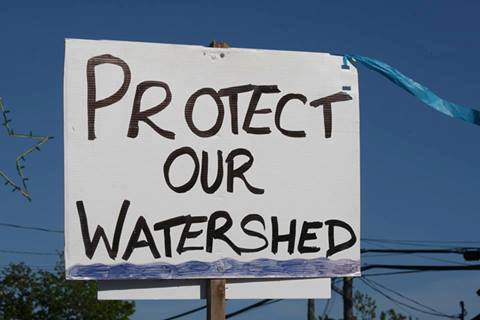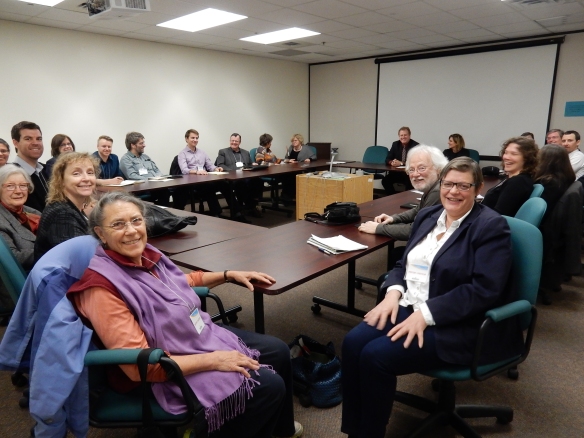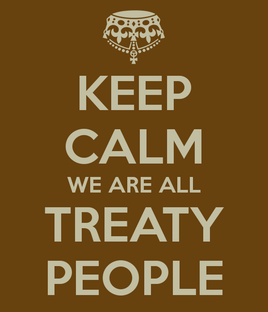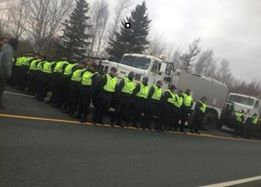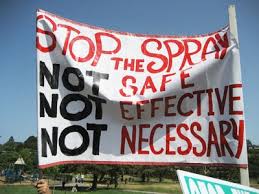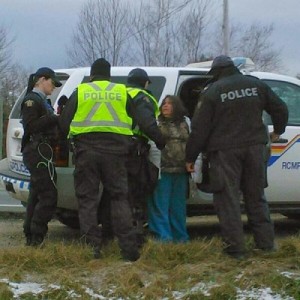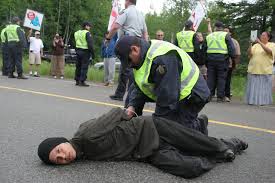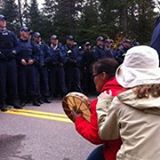
December 13, 2016
To: National Security Consultation, Public Safety Canada
From: Ann Pohl, on behalf of the Kent County Chapter, Council of Canadians;
To the Attention of:
- The Honourable Jody Wilson-Raybould, Minister of Justice:
Jody.Wilson-Raybould@parl.gc.ca - The Honourable Ralph Goodale, Minister of Public Safety:
ralph.goodale@parl.gc.ca - Patrick Finnegan, MP for Miramichi-Grand Lake:
Pat.Finnigan@parl.gc.ca - Dominic Leblanc, MP for Beasejour:
dominic.leblanc@parl.gc
I am writing to you today on behalf of the Kent County NB Chapter of the Council of Canadians.
We are pleased to learn that your government is seriously considering how to undo the considerable damage to human rights enacted through the Anti-Terrorism Act (formerly known as Bill C-51).
Unfortunately, we only became aware of your government’s consultation process on this matter about a week ago. In this letter, we ask you to consider the grave social importance of having a public meeting in our area. What follows is the “back story” so that you know why we make this request.
Introducing Ourselves
Our chapter supporters are some of the Anglo, Acadian, Mi’kmaq, and Newcomer community members who determinedly protected our watersheds, soil, air, communities, properties, and the health of our family and neighbours, from the threat of deep shale unconventional hydraulic fracking in 2013.
Actually, we were educating ourselves and others on this issue since 2011, when people in this area first learned about this proposed resource development by SWN Resources Canada. The industry was still in its youth when we heard it was coming here. Still, we were not operating on a lucky hunch when we began to kick up a fuss about the proposal for this to happen in our neighbourhood of New Brunswick. We were warned of the serious issues by other communities in the United States, who had been in the first wave of those to be fracked. For that, we are extremely grateful..
Aside from documented cases of pollution of water, soil and air, this resource extraction  process is incredibly capital and water-usage intensive, It contributes terribly to global climate issues due to fugitive methane releases, flaring, and the carbon footprint of the industrial practices of drilling, transporting, etc. On top of that, this form of deep fracking has proven to have very low productivity after just the first year. When the wells become too unproductive to merit more fracks, they are no longer used. Most governments have not demanded a guarantee for close-down in the contracts with proponents. Sometimes wells get capped off properly, but these may remain hazardous unless monitored continuously. There are many time-bombs in aging frack plays, because the cost of proper decommissioning and monitoring is greater than the profit margin supports.
process is incredibly capital and water-usage intensive, It contributes terribly to global climate issues due to fugitive methane releases, flaring, and the carbon footprint of the industrial practices of drilling, transporting, etc. On top of that, this form of deep fracking has proven to have very low productivity after just the first year. When the wells become too unproductive to merit more fracks, they are no longer used. Most governments have not demanded a guarantee for close-down in the contracts with proponents. Sometimes wells get capped off properly, but these may remain hazardous unless monitored continuously. There are many time-bombs in aging frack plays, because the cost of proper decommissioning and monitoring is greater than the profit margin supports.
Subsequent to our success at stopping the proponent from commencing with drilling, we have been proven correct in our concerns. There is now conclusive scientific research on the risks and hazards of this form of fracking. Our concerns were acknowledged by the Government of New Brunswick earlier this year, when an indefinite moratorium on hydraulic fracking was announced.
In short, we have been exonerated: we were right to defend our families and our rural environment from this environmental threat. Yet, in 2016, there are road-level resistors/protectors who are still living with court “conditions.” The conditions imposed on many of our Indigenous allies are far more severe than what a non-Indigenous person would expect. All-out attempts were made to make an example of us and thus discourage other similar Water Protection actions across Canada.
The facts about fracking above illustrate that we did the right thing when it needed to be done. We did this despite having to face down our own provincial government, one of the largest oil and gas mining companies in North America, and the most powerful resource extraction corporation in this province who also controls the vast majority of the mainstream media. In a sense, we were on the side of the angels, but obviously some of the national security forces in Canada did not agree.
The Repression We Experienced
I do not need to drag you through everything we went through. It is all a matter of public record in the media, and in various government files. I want to bring your focus to the particular matters which underscore why the Peoples of Kent County NB deserve our own public consultation meeting on domestic national security and the Anti-Terrorism Act. I will focus on four points:
-
Critical Infrastructure Intelligence Assessment: Criminal Threats to the Canadian Petroleum Industry
Around the same time as Bill C-51 was introduced to the federal parliament, a “top secret” RCMP 2014 document was somehow obtained by Greenpeace and released to the media. This document is an internal “security force” backgrounder. It clearly makes the argument for a stronger legislative framework to criminalize grassroots environmental protection action.
It is significant to note that this document repeatedly suggests that peaceful protesters who assemble over climate concerns or other environmental issues are somehow a risk to national security. It is a disgrace that such a document would be produced in a country committed to respect for the civil and political rights of its citizenry.
Throughout the document you will note that our allies and ourselves are specifically
 portrayed in a very negative manner. Completely missing from this biased document is what we actually did for four years to protect the water and environment here in Kent County NB and why we did it. Also, the document suggests we were all dangerous and inclined towards violent protest.
portrayed in a very negative manner. Completely missing from this biased document is what we actually did for four years to protect the water and environment here in Kent County NB and why we did it. Also, the document suggests we were all dangerous and inclined towards violent protest.Exaggerations, lies, misinformation, and disinformation are propagated in this official document. This is only one example of how we Protectors and Defenders have been villainized, disrupted, and otherwise attacked in the so-called interest of national security. We do not expect an apology for these slanderous comments. We would like the opportunity to tell leaders of Canada about the damage your police and security forces have done to lives here with these and other attacks.
-
SWN Resources sued gas protesters for losses
Two civil court actions were filed by SWN Resources Canada in Fall 2013 against some of us and our allies. (A link to an article on the first suit is provided in this section’s heading.) It is evident that these claims were launched for the purpose of discouraging public involvement in resisting the destruction of our local environment. Typically, civil actions like these are known as “SLAPP suits” (Strategic Legal Action to Prevent Public Participation in social activism). They include a claim for damages, on the basis of which an injunction is sought against protestors.
 These suits are simply corporate violation of human rights. To those directly named, they cause alarm, depression, trauma, anger, and much more. In the broader community, they create panic and confusion for those who are affiliated with the named individuals through organizations or actions. In almost all cases, the suits amount to empty bullying. Few are taken to conclusion, primarily because corporations know they would lose with their inflated and untrue assertions. In a subsequent news report, it can be seen that the 10 named individuals in this first SWN Resources Canada initiated SLAPP suit are accused by the corporations of a range of illegal and obnoxious acts. Although our Chapter does not personally know all the individuals named, we do know that several of those accused had not done the things that were published in the newspaper as their “crimes.”
These suits are simply corporate violation of human rights. To those directly named, they cause alarm, depression, trauma, anger, and much more. In the broader community, they create panic and confusion for those who are affiliated with the named individuals through organizations or actions. In almost all cases, the suits amount to empty bullying. Few are taken to conclusion, primarily because corporations know they would lose with their inflated and untrue assertions. In a subsequent news report, it can be seen that the 10 named individuals in this first SWN Resources Canada initiated SLAPP suit are accused by the corporations of a range of illegal and obnoxious acts. Although our Chapter does not personally know all the individuals named, we do know that several of those accused had not done the things that were published in the newspaper as their “crimes.”In many jurisdictions there is no legislation preventing corporations from launching these exasperating actions. As in our area, the names of all accused would be dragged through the mud in public while all these people are doing is exercising their civil and political rights. An increasing number of jurisdictions are bringing in legislation that prevents frivolous and noxious legal action like this. To protect the rights of all Canadians, federal initiative is needed to ensure that SLAPP suits cannot happen anywhere in this nation.
-
Chair-Initiated Complaint and Public Interest Investigation into the RCMP response to the shale gas (fracking) protests in Kent County, New Brunswick, in 2013
In 2013, we spent seven months on the roads of this county to stop SWN Resource Canada’s search for the best fracking drill sites. Many of us – especially our Mi’kmaq allies – were subjected to severe repression by the RCMP. Numerous abuses of power took place.
The RCMP also completely and inexplicably flip-flopped on the question of whether it was their responsibility to enforce a private corporation’s civil suit seeking damages for their losses from community leaders. Initially the RCMP said it was not their job: there is a court affidavit dated October 9th that substantiates this. For some unknown reason, a week later they changed their opinion, and immediately initiated one of the largest police attacks on a public protest ever seen in Canada. Even this assault, and a myriad of trumped-up charges and release conditions, did not stop us. Resistance continued on the road for another almost two months.
Many of us who were involved feel strongly that much of the non-peaceful conduct on 2013 was the work of outsiders, possibly provocateurs, conceivably working for a security force that wanted to make us look bad. Not coincidentally, no protector/protester was convicted of the most controversial activity that took place: the burning of police cars. Our feelings about this are based in reality. It has been previously determined that RCMP have burnt buildings and cars, and conducted other illegal activities to discredit dissenters and activists.
Many of us were traumatized by the experiences we had at the hands of the RCMP.
 Arising from all of this, hundreds of complaints about police abuse of powers were documented. These are being investigated by the Civilian Review and Complaints Commission for the RCMP. In December 2014, we were relieved to learn that the Civilian Commission has taken this matter so seriously that their own Commissioner also filed a complaint regarding RCMP activity. It is now more than three years since these abuses took place, and more than two years since the investigation began. It is very demoralizing that there has been no news about when we can expect a report from the Commission.
Arising from all of this, hundreds of complaints about police abuse of powers were documented. These are being investigated by the Civilian Review and Complaints Commission for the RCMP. In December 2014, we were relieved to learn that the Civilian Commission has taken this matter so seriously that their own Commissioner also filed a complaint regarding RCMP activity. It is now more than three years since these abuses took place, and more than two years since the investigation began. It is very demoralizing that there has been no news about when we can expect a report from the Commission.Sadly, being disappointed by the Commission is not a huge surprise. In 2009, the Harper government removed outspoken Paul Kennedy, head of the Commission for Public Complaints against the RCMP, from his position. The government at that time also cut the budget of the this agency, and narrowed its purview. Subsequently, in December 2014, the Harper government finished off any hope for a valid independent process for review of RCMP actions through passage of the Enhancing Royal Canadian Mounted Police Accountability Act. This closed the Commission for Public Complaints and replaced it with the current Civilian Review and Complaints Commission for the Royal Canadian Mounted Police (CRCC), which is mandated under the RCMP Act and has no powers to order anything. The CRCC can only make suggestions and use moral suasion.
-
35 Indigenous anti-shale gas protesters in N.B. on RCMP ‘threat’ list
Recent media reports indicate that the RCMP’s National Intelligence Co-ordination Centre has a list of 313 Indigenous activists who concern them. 89 of these are on a priority “watch list.” 35 of these “potential threats to public safety” got on the list because of anti-fracking resistance here in Kent County NB. Jeffrey Monaghan, an assistant professor at Carleton University’s Institute for Criminology and Criminal Justice, filed the Access to Information request that uncovered the list of Indigenous persons of national security interest. Monaghan is quoted saying, “These are Charter-protected activities… public, political events that people are engaging with.”
 In a follow-up new story on CBC, ‘We’ve always been seen as a threat,’ says former N.W.T. premier of RCMP surveillance revelations, former NWT Premier Stephen Kawfki makes the point that “some of our people stand up to protect our land, wildlife, our way of life, our community against development and against business interests, industrial interests… When our people stand up and take a stand it evokes fear and outrage sometimes from other groups and individuals and we need protection. That’s what police are for.” Deneze Nakehk’o, who works with Dene Nahjo in the NWT, comments, “All this surveillance really makes it difficult for Indigenous people to trust the state.” Kawfki is concerned that “Canada reverts to police state surveillance, when we should all be working towards working together.”
In a follow-up new story on CBC, ‘We’ve always been seen as a threat,’ says former N.W.T. premier of RCMP surveillance revelations, former NWT Premier Stephen Kawfki makes the point that “some of our people stand up to protect our land, wildlife, our way of life, our community against development and against business interests, industrial interests… When our people stand up and take a stand it evokes fear and outrage sometimes from other groups and individuals and we need protection. That’s what police are for.” Deneze Nakehk’o, who works with Dene Nahjo in the NWT, comments, “All this surveillance really makes it difficult for Indigenous people to trust the state.” Kawfki is concerned that “Canada reverts to police state surveillance, when we should all be working towards working together.”That is exactly our point. When any of us are handled like enemies of the state, when civil and political human rights are violated by the state, all of us are injured. Then we are all affected and become extremely distrustful. That is the situation today in Kent County NB.
There are no comparable information releases for non-Indigenous people involved in environmental protection or social justice action across Canada, or specifically here in NB. However, we can be sure there is a long general and a shorter “watch-list” for non-Indigenous persons as well. At the community level, we grassroots people are all in this together. As well some non-Indigenous people have been long involved in peace and justice civil disobedience, and many work together with Indigenous communities.
What A Public Consultation Meeting re: the Anti-Terrorism Act would Mean for People in Kent County
 In this submission, we have not touched on all the problems in Canada’s current national security legislation, policies and programs. As mentioned, only last week we accidentally learned of this consultation process deadline. There are certainly dozens of issues we would like to highlight, but shortness of time makes that impossible. For now, suffice it to say we endorse anything sent in by any chapter of the Council of Canadians, the national office of the Council of Canadians, or from KAIROS, Voices-Voix, or the Canadian Section of Amnesty International.
In this submission, we have not touched on all the problems in Canada’s current national security legislation, policies and programs. As mentioned, only last week we accidentally learned of this consultation process deadline. There are certainly dozens of issues we would like to highlight, but shortness of time makes that impossible. For now, suffice it to say we endorse anything sent in by any chapter of the Council of Canadians, the national office of the Council of Canadians, or from KAIROS, Voices-Voix, or the Canadian Section of Amnesty International.
Our immediate request is that your Committee come to Kent County NB to hear from people directly how we feel about being made to look like enemies of the state. Speaking for our Chapter members, and advocating also for all our diverse Water Protection allies, you need to see our faces and hear our voices to understand what needs to change and why.
After the treatment many of us endured, we need to know you care enough to take the time to do this. It may be a first step to rebuilding trust. As former NWT Premier Kawfki says, we are all in this together. There is no Planet B. We need to figure out how to get along and pull this planet back from the brink of ecoapocalypse.

copied to:
Scott Bardsley, Media Coordinator/Minister of Public Safety; scott.bardsley@canada.ca
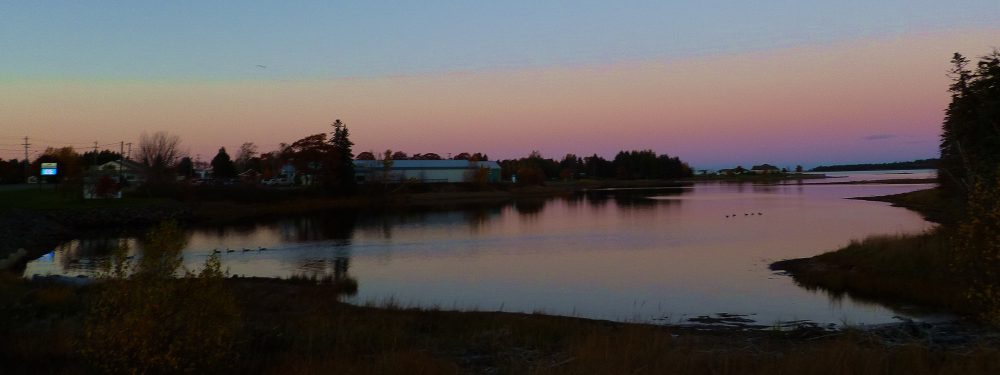

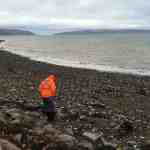 “Herring feed everything,” says Darren Porter. “Without herring, we have a catastrophe on our hands.” Predators of herring include seabirds, marine mammals, and larger surface fish such sharks, tuna, salmon, striped bass, cod, and halibut. People also eat this oily fish: raw, fermented, pickled, smoked, salted, etc. Herring roe is valued by some. Herring are commercially important in another way: they are used for shellfish traps and pots.
“Herring feed everything,” says Darren Porter. “Without herring, we have a catastrophe on our hands.” Predators of herring include seabirds, marine mammals, and larger surface fish such sharks, tuna, salmon, striped bass, cod, and halibut. People also eat this oily fish: raw, fermented, pickled, smoked, salted, etc. Herring roe is valued by some. Herring are commercially important in another way: they are used for shellfish traps and pots.
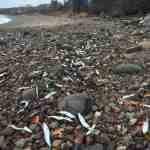
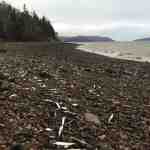 As Porter says, “It does not look likely that turbines are the cause, because of the distance between the new turbine in Minas Passage and where the herrings are beached, but to not assess a factor that could be causing this kill is irresponsible, regardless of what factor that is. DFO has told me this could be related to food supply, predator avoidance, viruses, water conditions, etc. – all of which are not monitored or studied on a regular basis. For the turbines, we know the possible pathways of effects and can assess the likelihood based on the evidence collected.” Yet it appears that the turbines are not being properly evaluated.
As Porter says, “It does not look likely that turbines are the cause, because of the distance between the new turbine in Minas Passage and where the herrings are beached, but to not assess a factor that could be causing this kill is irresponsible, regardless of what factor that is. DFO has told me this could be related to food supply, predator avoidance, viruses, water conditions, etc. – all of which are not monitored or studied on a regular basis. For the turbines, we know the possible pathways of effects and can assess the likelihood based on the evidence collected.” Yet it appears that the turbines are not being properly evaluated.






